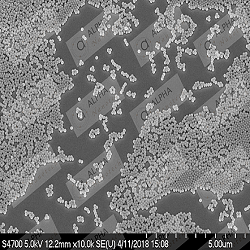Magnetic
silica nanoparticles are
powerful tools in various research fields, from drug delivery and diagnostics
to environmental remediation. Alpha Nanotech, a leading supplier of
nanomaterials, offers high-quality magnetic silica nanoparticles to empower
your scientific endeavors.
Unlocking
the Potential of Magnetic Silica Nanoparticles:
These
nanoparticles possess a unique combination of properties:
Magnetic
core: Enables manipulation using external magnetic fields, facilitating
separation, targeting, and controlled release.
Silica
shell: Offers a biocompatible and versatile platform for surface functionalization,
allowing attachment of specific molecules for targeted applications.
Why
Choose Alpha Nanotech's Magnetic Silica Nanoparticles?
Exceptional
quality: They boast narrow size distribution and high uniformity, ensuring
consistent performance in your experiments.
Tailored
solutions: Alpha Nanotech offers various sizes and surface modifications to
meet your specific research needs.
Reliable
supplier: With their commitment to quality and customer satisfaction, Alpha
Nanotech guarantees consistent product availability and technical support.
 |
| Iron Oxide Beads Coated With Silica |
Explore
Diverse Applications:
· Drug
delivery: Magnetic silica nanoparticles can be used to deliver drugs directly
to target sites, improving efficacy and reducing side effects.
·
Magnetic
resonance imaging (MRI): They serve as contrast agents, enhancing image
resolution and enabling better disease diagnosis.
·
Cell
separation: Researchers can leverage the magnetic properties to isolate
specific cell types for further study.
·
Environmental
remediation: Magnetic nanoparticles can aid in removing pollutants from water
and soil.
Empowering
Your Research Journey:
By
incorporating Alpha Nanotech's Iron oxide beads coated with silica into
your research, you gain access to:
·
Enhanced
experimental control and accuracy
·
Improved
sensitivity and detection capabilities
Beyond
the applications mentioned, the potential of these nanoparticles extends even
further. They can be employed in:
Biosensing:
Magnetic silica nanoparticles act as biosensors, detecting specific biological
markers for disease diagnosis and monitoring.
Biocatalysis:
Immobilized enzymes on these nanoparticles can accelerate and facilitate
various biochemical reactions.
Tissue
engineering: They serve as scaffolds for growing new tissues, offering
promising avenues for regenerative medicine.
Alpha
Nanotech's commitment to innovation ensures continuous development of novel
functionalities for these versatile nanoparticles. Partner with them to unlock
a world of possibilities in your research endeavors.
Visit
Alpha Nanotech's website today to explore their extensive range of magnetic
silica nanoparticles and discover how they can propel your research forward.
%20Microspheres.jpg)



%20Microspheres.jpg)